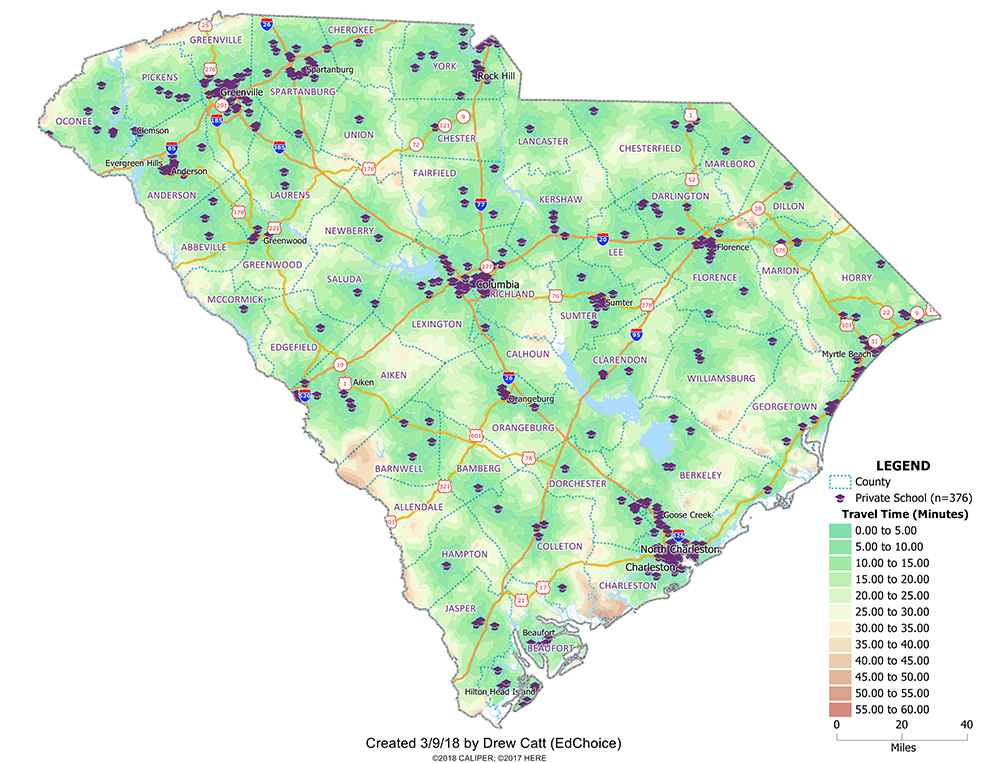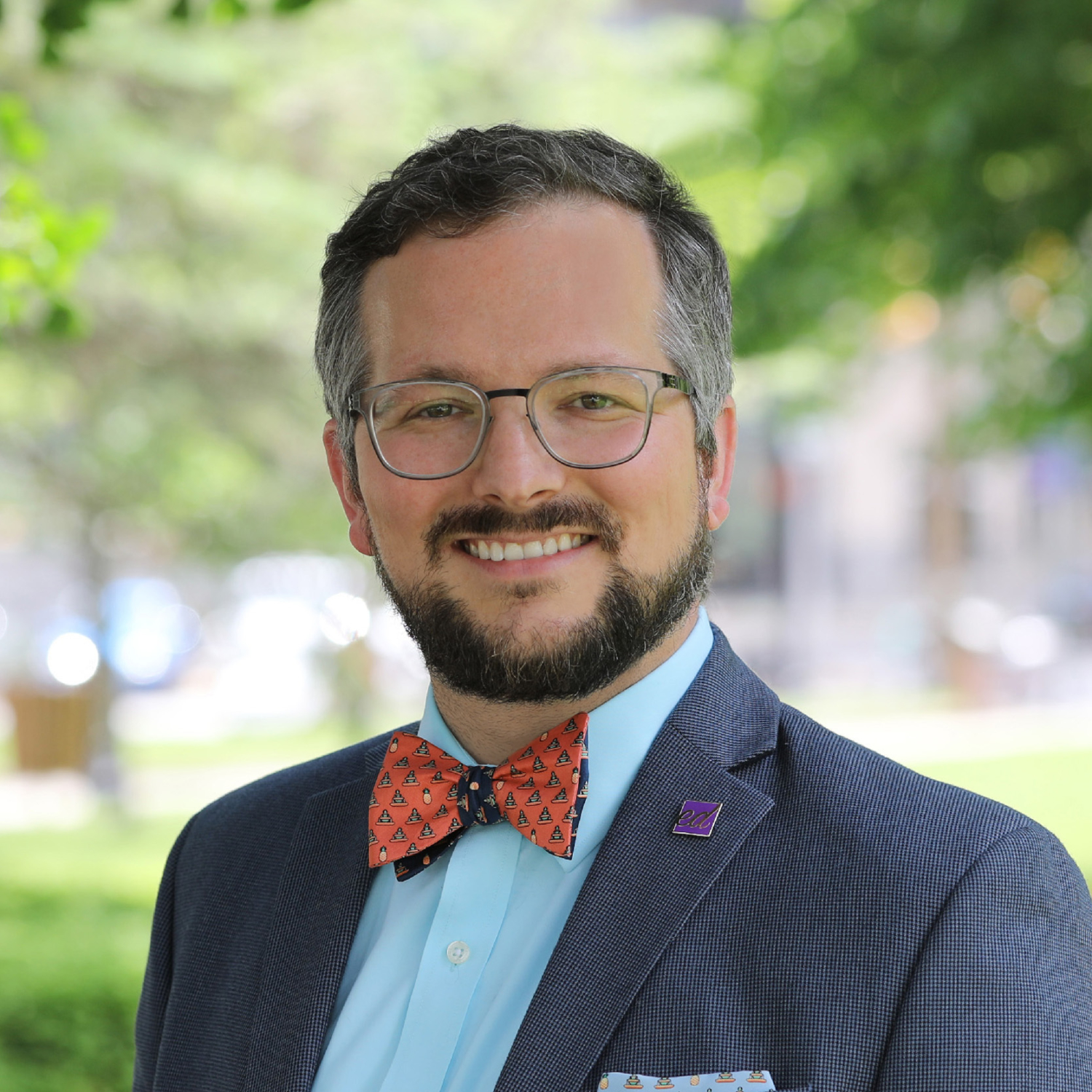Mapping Drive-Times from Private Schools in South Carolina
South Carolina already has a tax-credit scholarship and individual tax credit for families of students with special needs, and existing South Carolina private schools seem open to participating in a general education savings account (ESA) program, another form of flexible private school choice.
But where exactly are South Carolina private schools located? Which communities have private schools, and which don’t? And how quickly can families in the Palmetto State transport their children to private school options?
The below private school drive-time map begins to answer some of these questions.

Here’s a quick breakdown of what the South Carolina map shows:
- All students in grades K–12:
- 31 percent live within a five-minute drive of at least one private school
- 68 percent live within a 10-minute drive of at least one private school
- 85 percent live within a 15-minute drive of at least one private school
- 94 percent live within a 20-minute drive of at least one private school
- 98 percent live within a 25-minute drive of at least one private school
- Greater than 99 percent live within a 30-minute drive of at least one private school
- Families that, based on their income, would qualify for free or reduced-price lunch (conservatively assumes income less than $35,000 for a family of three):
- 31 percent live within a 5-minute drive of at least one private school
- 65 percent live within a 10-minute drive of at least one private school
- 83 percent live within a 15-minute drive of at least one private school
- 93 percent live within a 20-minute drive of at least one private school
- 98 percent live within a 25-minute drive of at least one private school
- Greater than 99 percent live within a 30-minute drive of at least one private school
- Median incomes of households:
- $44,368 for those zero to five minutes from at least one private school
- $45,609 for those five to 10 minutes from at least one private school
- $42,811 for those 10 to 15 minutes from at least one private school
- $38,785 for those 15 to 20 minutes from at least one private school
- $34,905 for those 20 to 25 minutes from at least one private school
- $30,133 for those 25 to 30 minutes from at least one private school
Earlier this year, we surveyed South Carolina private schools about their capacity, tuition and fees, interest in choice programs and concerns with education policies. While not every private school mapped here responded to the survey for our recent brief, Exploring South Carolina’s Private Education Sector, some data presented in it align with the map.
For instance, Columbia (12), Greenville (10) and Charleston (8) were the top three cities with the largest number of respondent private schools in our survey, and these cities likewise appear to be rich with drivable private school options.
It’s important to note that one state’s private school market cannot be generalized to all states. Take Mississippi. Unlike Mississippi’s private school drive-time map, hardly any communities in South Carolina—if at all—have more than a 40-minute drive time to at least one in-state private school. This may be due to a number of factors, not the least of which is the comparative size of these Southern states (Mississippi has 56 percent more square miles within its borders than South Carolina).
We hope to expand on mapping projects in the coming years at EdChoice. Among those planned include a look at where there is a lack of reasonable access to high-quality schools in Indiana. You can also expect more private school drive-time maps for related surveys in additional states, including one for New Hampshire set to be released in the coming months.
If you would like to pitch new mapping projects to the EdChoice research team, email research@edchoice.org.





